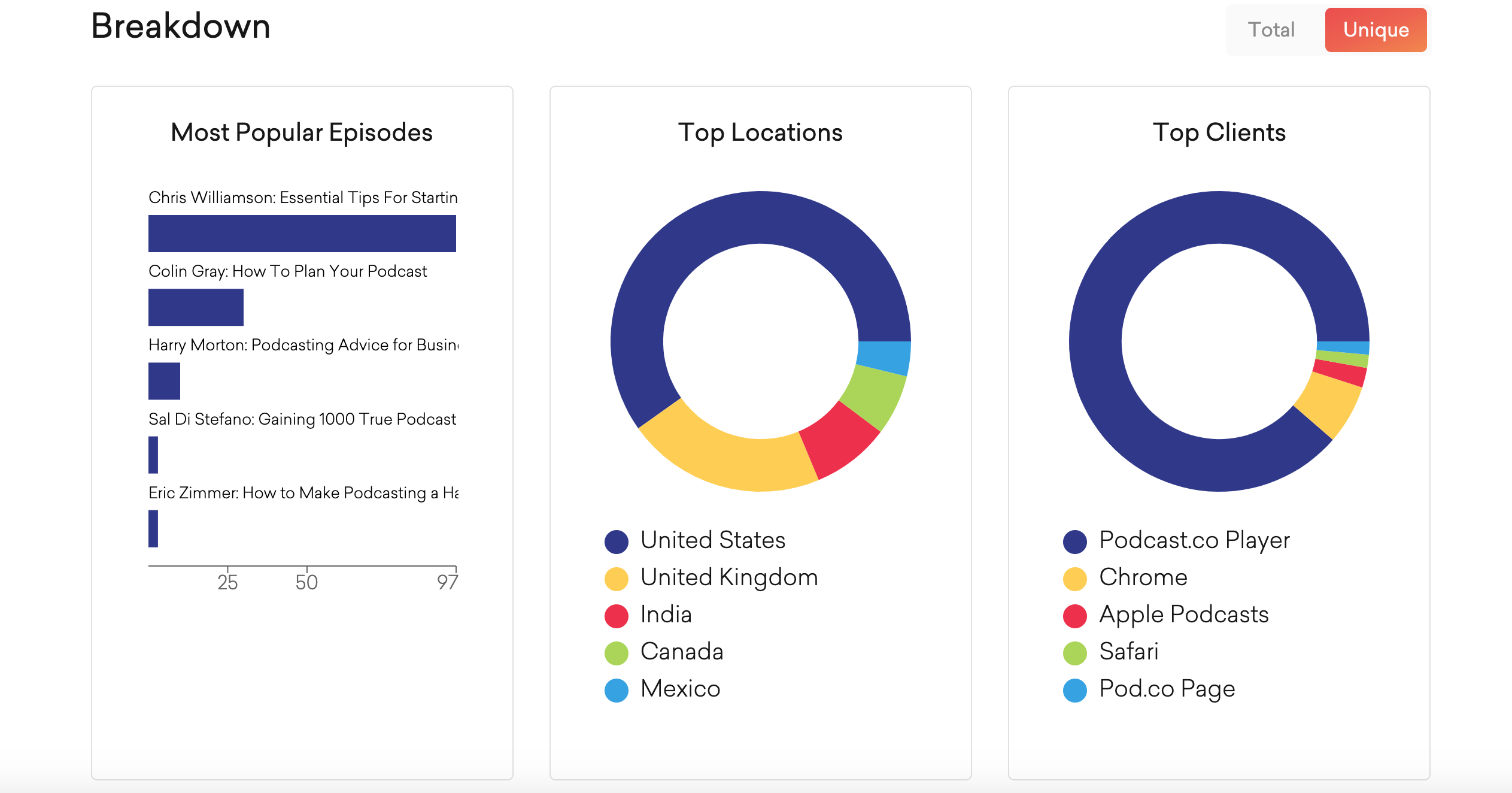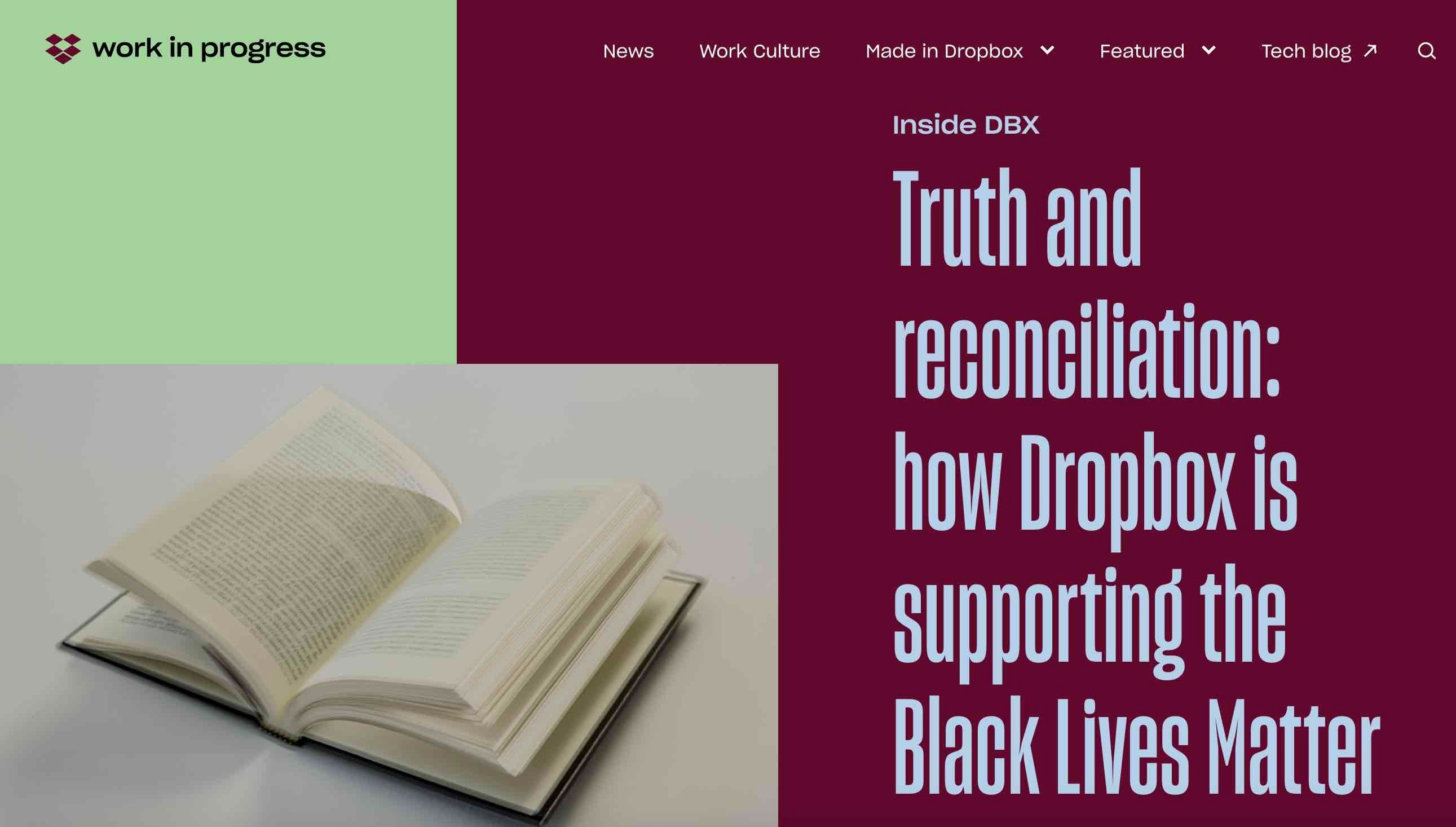Keeping all your employees connected and in the loop about what’s going on at your company is a big challenge. With the increased prevalence of remote working, it’s hard keeping everyone feeling like they’re actually part of a bigger team. Traditional forms of communication like emails and instant messaging aren’t quite cutting it (and let’s not get into the very real phenomenon of Zoom fatigue).
Making an internal company podcast allows you to approach comms problems from a different angle. Podcasts are a great way to keep people updated on important news, provide training, or even just to keep staff connected to senior leadership. They’re more engaging than having to wade through an endless stream of emails. And they’re more convenient than having to watch a pre-recorded video, spending yet another hour at a desk, staring at a screen.
Internal company podcasts are becoming more and more popular as a way to communicate with employees. But how can you use them, and why would you want one in the first place? We’ll cover all that and more in this article.
How Internal Company Podcasts Work
Private internal podcasts are exactly like normal public ones, except you (the publisher) can choose who has access to the episodes on an invite-only basis.
They run on the same platforms as every other podcast, but the general public can find or access a private RSS feed.
Whoever you choose to give access to can subscribe to your podcast in the same way they’d subscribe to their favourite public podcasts. Those who already know and love podcasts will already know what to do. And for those not yet familiar, it’s an easy process they can quickly get their heads around.
How Companies Are Using Internal Podcasts
So what would you actually say in an internal podcast? What do you use it for? The answer really depends on your company and your goals, but here are some common uses to give you an idea.

- Training and development - create educational podcasts so employees can learn new skills
- Onboarding - make an evergreen podcast you can make available to every new employee you hire from now on. This is a good way to make content that’s usually really dry, like health and safety and GDPR, into something a bit more interesting. You can also use the podcast to give new hires an idea of the company culture they’re joining.
- Keeping the CEO and employees connected - it’s easy for employees to feel completely disconnected from the higher ups in the company. Having the CEO host (or be a guest) on a private podcast can help break through some of the mystery around them. And your employees will feel more valued if you keep them feeling involved and connected even to those at the very top of the company.
- Keeping your team up to date - use a regular podcast to keep your employees updated on the latest industry trends and developments.
- Managing changes in your company - a podcast can keep employees in the loop about any changes happening within the company. Make sure everyone’s on the same page about what’s going on and whether they need to take any actions.
Benefits of Internal Company Podcasts
Podcasts are one of the most engaging and convenient ways to communicate with your employees. They’re good at getting people to act on announcements rather than skimming through and then forgetting them. Here are 4 reasons why private podcasts are a good method of internal communication.
1. Podcasts are more engaging than other media
If you need to give your team quick updates, your instinct might be to shoot them an email. But email inboxes are so full, it’s a challenge getting anyone to even read what you’ve got to say, let alone really take it in. Or maybe your company has some form of digital announcement board. But these text-based announcements are the same story - people often just give them a single cursory glance so they can delete the notifications.
But podcasts are a different story. It’s easier to make a voice recording more interesting because you can inject some personality into it. In comparison, reading an email is much more involved and demanding (which is why many simply don’t do it). Just speaking naturally like you would in normal conversation will make it easier for other people to pay attention to your message.
2. Podcasts are convenient for your employees
You can listen to a podcast anywhere, at any time. That makes them accessible for those with even the busiest schedules. People can listen when it suits them, even while going on a walk or doing the ironing.
Podcasts also help beat screen fatigue. Screen fatigue is especially widespread during remote working, when even social interactions outside of work happen via a screen. Giving people a break from sitting at a desk staring at a screen will help them feel more refreshed and ready to work once they get back to their computers.

3. Podcasts are great for building company culture
Having a good company culture is vital for making your employees feel connected and valued. A podcast can help strengthen the connections between people in your company. For example, the CEO can talk directly to employees. The intimate nature of listening to a podcast can build trust and a sense of connection between listeners and those higher up in the company.
Podcasts are also a good medium to have tough conversations. It’s easier to convey tone and nuance in a podcast than over text, so you can dig deep into the important issues. The podcast Dropbox made in response to Black Lives Matter is a good example of this - which we’ll cover in more detail shortly.
4. You can measure what’s working
Podcast analytics allow you to see detailed information about which episodes are most popular. This allows you to figure out what resonates most with employees and spend your time creating more of that type of content in future.
If that isn’t enough information, you can always ask for honest feedback about the podcast too. This will help you make sure your messages are being taken on board - and if they’re not, what you can do to fix it.

Case Study: ‘Truth & Reconciliation’ by Dropbox

If you’re still struggling to imagine how an internal company podcast might work, take a look at how Dropbox did it. They launched an internal program of events called ‘Truth and Reconciliation’ in 2020, in response to the Black Lives Matter Movement. It was a way to start a conversation about institutional racism and how to create change. And a key part of the project was the launch of a podcast.
The podcast meant all the events and talks held live were made accessible to employees as a series of internal podcasts. The Diversity Engagement Manager, Mehroz Baig, explained,
If people can’t attend live or sit in front of the computer for an hour, they can press play and listen to all of these as a lecture series whenever they want. Our hope is that providing yet another avenue to access these lectures will help more people tune in.
Tam Crane, the strategic account executive at Dropbox, explains how she found the program really helpful. She said, “For me, these talks have been extremely educational and they’ve deepened my understanding on how institutional racism is sewn into our society and history. I’ve since had more open conversations with my mum and my kids about racism in hopes to become the best ally I can be.”
A podcast is perfect for having these difficult conversations, because unlike over email, it allows for tone and nuance to show through. It’s also more likely to be engaged with than a video or live event which requires more commitment. So if you have anything important you need your employees to pay attention to, a podcast is a great way to get your message out there.
How to Create a Private Podcast
Launching an internal company podcast is easy with Podcat.co. We’ve designed our platform with ease-of-use in mind, so even if you’ve got zero podcasting experience, it’s still quick and simple to get started. In the video below, Podcast.co founder James Mulvany talk you through every step of the process:
Once you’re up and running here are the features you’ll have access to:
Secure & Protected
Your content stays secure, always. Keep full control over who can listen to your episodes from an easy-to-use dashboard. View all active subscribers, and remove any who should no longer have access.
Private Podcasts On Popular Apps
Subscribers can tune in to your private podcasts using popular listening apps including Apple Podcasts, Google Podcasts, and more. Your content won’t be publicly listed on these platforms, it’s still invite-only access. But flexible distribution across Android, iOS, and Desktop means listeners can engage with your audio on their terms.

All Audience Sizes
Get up to 100 private subscribers as standard on Podcast.co’s Business plan. If you need more, simply get in touch and we’ll tailor an Enterprise plan to make sure you’re only paying for the number of subscribers you actually need. Extra capacity can be added or removed as needed at any time.
Collaborate Across Multiple Podcasts
Create additional private podcasts at no extra cost. Invite teammates to become admins, set permissions, and manage multiple private feeds under one roof. Control who has access to what and assign dedicated teams to work on different private podcasts.
Whitelist Your Domain
Whitelist your company email domain so all employees can self-subscribe to your podcast. All access requests from your company email domain will then be accepted automatically. Requests from other domains will be denied.
Automated Subscriber Management
Take the hassle out of managing your private podcast. Podcast.co integrates with Zapier allowing you to automate the addition and removal of subscribers from your list. Employees and members can join or leave at any time and your permissions will be updated automatically.
Conclusion
Internal podcasts are a great way to keep people in your company connected and involved. They can also make sure everyone’s up to date on everything, whether they’re a new employee or want to develop additional skills in their current role.
Podcasts are the perfect medium to keep people interested and paying attention. And they’re especially good for the growing number of companies now transitioning towards more remote and flexible ways of working.









